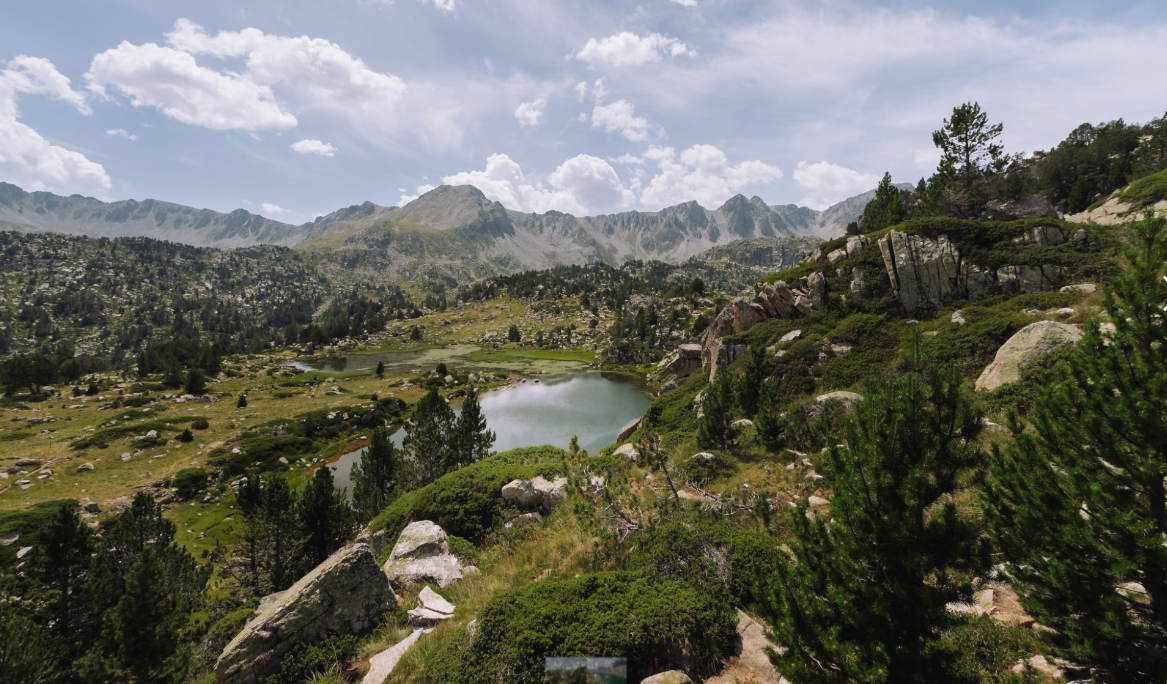At CREAF we have joined the Global Coalition United for Biodiversity promoted by the European Commission, and we expand the growing list of international organizations and institutions that call for the protection of biodiversity worldwide.
By joining the global alliance for biodiversity, we add our voice to raise the alarm about the environmental crisis and the need to protect biodiversity, according with the Conference of the Parties to the Convention on Biological Diversity (COP15). During COP15, the 196 parts of the United Nations Convention on Biological Diversity are expected to adopt a new global framework for nature conservation and restoration, as urgent as the Agreement of Paris on the climate challenge.
With its membership, CREAF joins the 43 organisations and 280 institutions from 51 countries that have already subscribed to the Coalition’s objectives, including specialized centres on all continents. CREAF becomes the 29th member from Spain, currently the 3rd most represented country in the Coalition after France and Germany. The research centre also becomes the 6th institution from Barcelona, together with the Natural Sciences Museum, the Botanic garden, the Zoo, the Aquarium and the Biodiversity Research Institute (IRBio).
The Global Coalition United for Biodiversity will focus on coordinated actions with tangible impact aimed at bending the curve of biodiversity loss
The Coalition was launched by EU Environment Commissioner for Environment Virginijus Sinkevicius on the occasion of World Wildlife Day 2020. After COP15, it will focus on coordinated actions with tangible impact aimed at bending the curve of biodiversity loss. It initially targeted museums, national parks, zoos, aquariums and botanical gardens. And it is now open to research centers and universities, nature reserves and protected areas such as Natura 2000 sites, as the European Commission points out that these are the best ambassadors to inform the public about the effects of the biodiversity crisis.
1 M species threatened with extinction
The importance of promoting knowledge and actions to preserve biodiversity is a global demand. According to the Global Assessment Report on Biodiversity and Ecosystem Services released by the Intergovernmental Science-Policy Platform where Biodiversity and Ecosystem Services (IPBES) in 2021, around one million animal and plant species are threatened with extinction, i.e. some 50,000 species every year. It is estimated that 135 species of plants, animals and insects are lost every day. The precarious situation of threat to biodiversity outlined by IPBES and the context pointed out by the Intergovernmental Panel on Climate Change (IPCC) in 2018 on global warming urgently call for the need to reduce global emissions by around 50% in the next 10 years, to achieve net zero emissions by 2050.
“The essential and interconnected network of life on Earth is getting smaller and smaller and more frayed,” said Professor Josef Settele, a scientist directly linked to the IPBES report. The environmental challenge posed by the loss of biodiversity is key for the director of CREAF, Joan Pino, PhD in Biology, who states that “without biodiversity, it would be impossible to obtain the multitude of ecological goods and services we need to live. Its loss is one of the greatest environmental challenges we have had to face in recent decades”.

“Without biodiversity, it would be impossible to obtain the multitude of ecological goods and services we need to live”
JOAN PINO VILALTA, Director at CREAF and Professor at Universitat Autònoma de Barcelona.
CREAF presented the 1st biodiversity assessment based on the best available scientific evidence, the State of Nature 2020 report. It is intended to be the first step of the Natural Heritage and Biodiversity Observatory in Catalonia.
At the end of 2019, CREAF presented the State of Nature 2020 report, the first biodiversity assessment based on the best available scientific evidence. Its results are intended to be the first step of the Natural Heritage and Biodiversity Observatory in Catalonia, with representative data of the situation in Southern Europe.
CREAF, frontier science for the 21st century
We are a public research centre made up of more than 200 people with research, academic and management profiles, dedicated to 4 main areas: global change, biodiversity, Earth observation and ecosystem functioning. Our research activity is also divided into 6 cross-cutting areas: forests, Mediterranean basin, ecosystem services, sustainability, citizen science and large databases and data quality.
Our activity pursues excellence in the production and dissemination of knowledge, as well as innovation, development and transfer of methodologies. We aimat contributing to knowledge on the conservation and management of the environment and the territory, as well as adaptation to environmental change at local, regional and global scales. In this way, we have the purpouse to become a bridge between the academic world, public administrations and society, and to raise awareness within its field of action.







